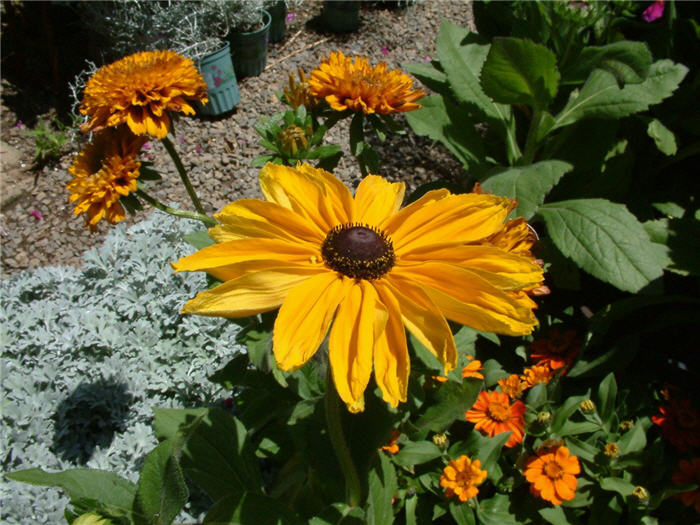| Botanical Name: Rudbeckia hirta 'Indian Summer' | |
| Common Name: Indian Summer Gloriosa Daisy |

-
Anatomy
-
Culture
-
Design
Plant Type
Perennial, Annual, Biennial
Height Range
1-3'
Flower Color
Gold, Orange
Flower Season
Summer, Fall
Leaf Color
Dark Green
Bark Color
n/a
Fruit Color
n/a
Fruit Season
n/a
Sun
Full
Water
Medium
Growth Rate
Fast
Soil Type
Sandy, Clay, Loam
Soil Condition
Average, Rich, Well-drained
Soil pH
Neutral
Adverse Factors
n/a
Design Styles
English Cottage, Meadow, Ranch, Spanish
Accenting Features
Showy Flowers
Seasonal Interest
Summer, Fall
Location Uses
Perennial Border, Patio, Raised Planter
Special Uses
Container, Cut Flowers
Attracts Wildlife
Butterflies
Information by: Stephanie Duer
Photographer:
Photographer:
-
Description
-
Notes
Indian Summer is a selection of gloriosa daisy with a pallet range of soft oranges to rusty browns. They typically grow 12 to 16 inches tall and wide. Blooms appear most of the summer months; deadheading will prolong the bloom. Though technically perennial, they seem to be shorter lived than other rudbeckia, and so are sometimes treated as annuals.
Grow in well drained soil and in full sun. Tolerates a range of soil types, including clay soil, dry soil, shallow soil, rocky soil. Drought and heat tolerant. Though prefers full sun, will tolerate a little shade. Rhizamatous habit means it spreads to form dense colonies, so just plan accordingly when you plant it. Leave flower stalks all winter as the seeds will feed the songbirds and provide winter interest. Cut back stalks and old foliage in late winter. Drought tolerant once established, but blooming period will be longer and more flowerful if watered periodically.